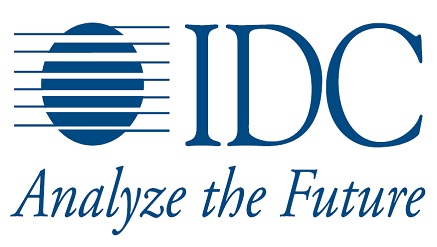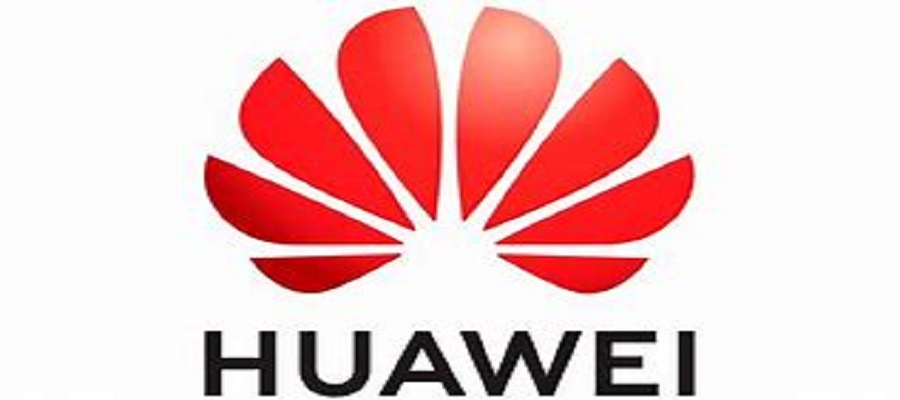E-Business
New IDC Government Insights TechScape Examines Role of Robotics in Government

The potential to apply autonomous or semi-autonomous machines to enhance the safety, precision, and efficiency of government services, particularly in defense and intelligence, public safety, surveying, and inspection, is extremely significant.
Nevertheless, the early stages of development research around full automation of task control capabilities and battery sustainability, in addition to ethical and legal concerns, make the prospect of widespread deployment of robotics in government distant in time.
To help government executives identify potential benefits and challenges of adopting robotics technology, IDC Government Insights has published, IDC TechScape: Robotics in Government, 2015 (Doc #EMEA40990416).
The new report was created to highlight opportunities and risks, so that executives can start to consider robots in their long-term capital investment roadmaps as safe and more efficient methods of mission delivery.
The alignment of 3rd Platform technologies, advances in applied science fields (such as mechanical/chemical engineering), and the evolving business, social, political, and legal frameworks within which technologies are applied, are laying the foundation for a new round of disruptive innovation accelerators.
These disruptive innovation accelerators include robotics, natural interfaces, 3D printing, Internet of Things, cognitive systems, and next generation security.
However, out of these innovation accelerators, robotics could possibly have the most long-term potential to impact human culture overall.
This is a new area of interest in many government domains, ranging from defense and intelligence, to public safety, agriculture, environmental protection, and public transportation.
In the new report, IDC Government Insights asserts:
Defense, intelligence, public security and public safety departments should consider themselves as early adopters.
Governments will need to plan for training and education for developers and operators in addition to implementing awareness campaigns that educate the public on the benefits of deploying robots.
Governments using or planning to buy robots should engage with external stakeholders to explore the general safety, privacy, financial, technical, and ethical issues of robotics.
Unlike other technology assessment frameworks, the IDC TechScape provides a visual representation of the process of technology adoption, dividing technologies into three major categories — transformational, incremental, and opportunistic — based on their impact on the organization, and then assessing their relative maturity within their respective categories.
In addition to reviewing specific, individual categories, this IDC TechScape provides insights regarding the speed of adoption, technology potential for success (risk), and industry market buzz.
The five broad categories of robots, intended as mechanical artificial agents, analyzed include:
Unmanned aerial vehicles (UAVs): also known as unmanned aerial systems or, more commonly, drones.
Autonomous vehicles (AVs): autonomous and semi-autonomous cars, trucks, trains, boats and other self-moving vehicles.
Unmanned underwater vehicles (UUV):underwater machines controlled either autonomously by onboard computers or by the remote control of a pilot.
Exoskeletons, also known as exoframes, or exosuits (EXOs): mobile machines consisting of an outer framework, worn by a person, and powered by a system of motors that assist the wearer through enhancing their strength and endurance.
Humanoid robots (HUMs): these are autonomous or semi-autonomous machines with their shape, or part of it, built to resemble the human body and replicate its functions.
The categories that define the three types of adoption curves in an IDC TechScape are:
• Transformational: Disruptive technologies that are likely to be next generational based on their potential to fundamentally transform current industry best practices.
Covered technologies and use cases include: UAV – Public Security – Reconnaissance; UAV – Defense and intelligence – Combat; UAV – Transportation of personnel and supplies; HUM – Disaster response.
• Incremental: Technologies that represent current industry best practices.
Covered technologies and use cases include: UAV – Defense and intelligence – Reconnaissance; UAV – Civilian agencies – surveying and inspections; AV – Transportation of people and supplies; UUV – Reconnaissance; EXO – Defense and intelligence – Combat; HUM – Surveying, inspection and maintenance, repair and overhaul (MRO).
• Opportunistic: Technologies that contribute to industry progress but are not considered integral to current best practices.
Covered technologies and use cases include: EXO – Surveying, inspection and MRO; UUV – Surveying, inspection and MRO.
According to Massimiliano Claps, Associate Vice President, IDC Government Insights in EMEA, “Governments will soon start to include in their technology roadmap key milestones of collaboration with academia and industry and will continue to invest in R&D to build robots that, in 15 to 20 years, can step into a world built for humans and perform a variety of tasks, from routine ones to lifesaving ones, in dangerous and hazardous situations.”
E-Business
Attackers Target Employees with Fake HR Updates

Kaspersky has identified an advanced phishing campaign targeting employees with personalised emails and attached documents disguised as HR policy updates.

This campaign marks a significant escalation in phishing tactics, with attackers tailoring not only the email body, but also the attachments by addressing individual recipients, showcasing an unprecedented level of customisation. The goal was to lure the victim into entering their corporate email credentials.
The attackers likely prepared by parsing employee names to make the campaign targeted and more convincing.
The emails feature a deceptive body: a fraudulent “verified sender” badge to build trust, the recipient’s name, and an invitation to open the attached file to review remote work protocols, benefits administration and security standards. However, the whole email body is in reality just an image with no real text in it; this is done to bypass email filters.
The attached document, posing as an updated “Employee Handbook,” does not contain any actual guidelines – only a title page, a table of contents with the items that have supposedly been changed highlighted in red, a page with a QR code, supposedly for going to the full document and common instructions on how to read QR codes using a phone. The document features the victim’s name multiple times to convince that this document was created specifically for them.
If the victim scans the QR code and follows the link, they land on a fraudulent page where they are asked to enter their corporate credentials, which is what the attackers are hunting for.
“This campaign demonstrates a new level of sophistication in phishing attacks, and we may be seeing a new mailing automation mechanism that generates a separate attached document and a separate image for the email body for each recipient.
“This tactic allows to scale the attack and at the same time possibly evade traditional defenses. Organisations must prioritise advanced security measures and employee education to stay ahead of these threats,” comments Roman Dedenok, Anti-Spam Expert at Kaspersky.
E-Business
Temu Joins INTA to Combat Counterfeits and Elevate IP Standards Worldwide

Temu, the global online marketplace, has joined the International Trademark Association (INTA) as a corporate member and serves on its Anti-Counterfeiting Committee.

INTA is a global association that brings together more than 6,700 organizations, representing over 37,000 trademark professionals and brand owners across 181 countries. By joining INTA, Temu deepens its commitment to building a trusted online marketplace and advancing global IP protection through broader, cross-industry collaboration.
“INTA welcomes TEMU’s willingness to engage in anticounterfeiting initiatives, including in the Association’s annual Anticounterfeiting Workshop and Online Takedown Certificate Program which serve to share best practices and connect stakeholders,” said Alastair Gray, Director of Anti-Counterfeiting, INTA. “Constructive collaboration with these efforts can contribute to the protection of intellectual property rights for INTA members and support the removal of counterfeit products from the platform which ultimately protects consumers.”
At the 2025 INTA Annual Meeting held in San Diego in May, Temu participated in the Anti-Counterfeiting Committee Roundtable, serving as a moderator to facilitate discussions among brand owners, online platforms, and government officials on emerging technologies, best practices for collaboration, and strategies to strengthen global anti-counterfeiting efforts.
“Joining INTA and serving on its Anti-Counterfeiting Committee reflects Temu’s ongoing commitment to ensuring a trustworthy online shopping experience,” said a Temu spokesperson. “We value collaboration with industry peers and stakeholders and are dedicated to advancing collective efforts in intellectual property protection.”
Temu also participates in INTA-led online workshops, including the Online Platform Notice and Takedown Certification Program, which outlines the latest procedures and best practices used by e-commerce platforms and social media companies. These workshops aim to enhance the quality and accuracy of rights-holder notices, promoting more effective takedown processes and content moderation.
Since launching in 2022, Temu has made significant investments in IP enforcement. Its measures include comprehensive seller vetting and compliance training, 24/7 algorithmic monitoring with manual review, a dedicated IP protection portal and brand registry to streamline takedown submissions, and an internal enforcement team that handles claims with speed and accuracy.
E-Business
Huawei Unveils AI Computing System to Challenge Nvidia’s Flagship Product

China’s Huawei Technologies unveiled an AI computing system on Saturday that an industry expert said rivals Nvidia’s most advanced product, as the company aims to expand its footprint in the country’s booming AI sector.

The CloudMatrix 384 system made its public debut at the World Artificial Intelligence Conference (WAIC), a three-day event in Shanghai, attracting a large crowd to Huawei’s booth with its showcase of cutting-edge AI innovations.
The system has attracted significant interest from the global AI community since Huawei (HWT.UL) first introduced it in April. Industry analysts see it as a direct challenger to Nvidia’s GB200 NVL72, the most advanced system-level offering currently available from the U.S. chipmaker.
In an April article, Dylan Patel, founder of semiconductor research firm SemiAnalysis, stated that Huawei now possesses AI system capabilities that could surpass those of Nvidia.
Huawei staff at its WAIC booth declined to comment when asked to introduce the CloudMatrix 384 system.
A spokesperson for Huawei did not respond to questions.
Huawei has become widely regarded as China’s most promising domestic supplier of chips essential for AI development, even though the company faces U.S. export restrictions.
Nvidia CEO, Jensen Huang told Bloomberg in May that Huawei had been “moving quite fast” and named the CloudMatrix as an example.
The CloudMatrix 384 system features 384 of Huawei’s latest 910C chips and, according to SemiAnalysis, surpasses Nvidia’s GB200 NVL72 in certain performance metrics, despite the latter using 72 B200 chips.
SemiAnalysis attributes this performance advantage to Huawei’s strong system design, which offsets the lower power of individual chips by leveraging a greater number of them and incorporating system-level innovations.
Huawei describes the system as utilizing a “supernode” architecture that enables ultra-high-speed interconnectivity between chips.
In June, Zhang Pingan, CEO, Huawei Cloud confirmed that the CloudMatrix 384 was already operational on Huawei’s cloud platform.

 E-Financial3 days ago
E-Financial3 days agoUnion Bank Rewards Customers with ₦5 Million Each in Save and Win Palli Promo Season 4 Grand Finale

 E-Business3 days ago
E-Business3 days agoHuawei Unveils AI Computing System to Challenge Nvidia’s Flagship Product

 E-Financial3 days ago
E-Financial3 days agoEdun, Finance Minister Inaugurates NDIC New Management

 News3 days ago
News3 days agoLawyers Drags NLS to Court for Alleged Election Fraud, Data Violation

 Telecom2 days ago
Telecom2 days agoGlo Boosts Network Capacity for Enhanced Customer Experience

 General News3 days ago
General News3 days agoNew Tax Law Empowers NRS to Fine Offenders up to N10m

 News2 days ago
News2 days agoTranscorp Power Posts Strong Half-Year Profit, Declares ₦11.25Bn Dividend

 Broadcasting3 days ago
Broadcasting3 days agoCourt Upholds AVRS Legal Rights to Licence Audiovisual Works in Hotels















